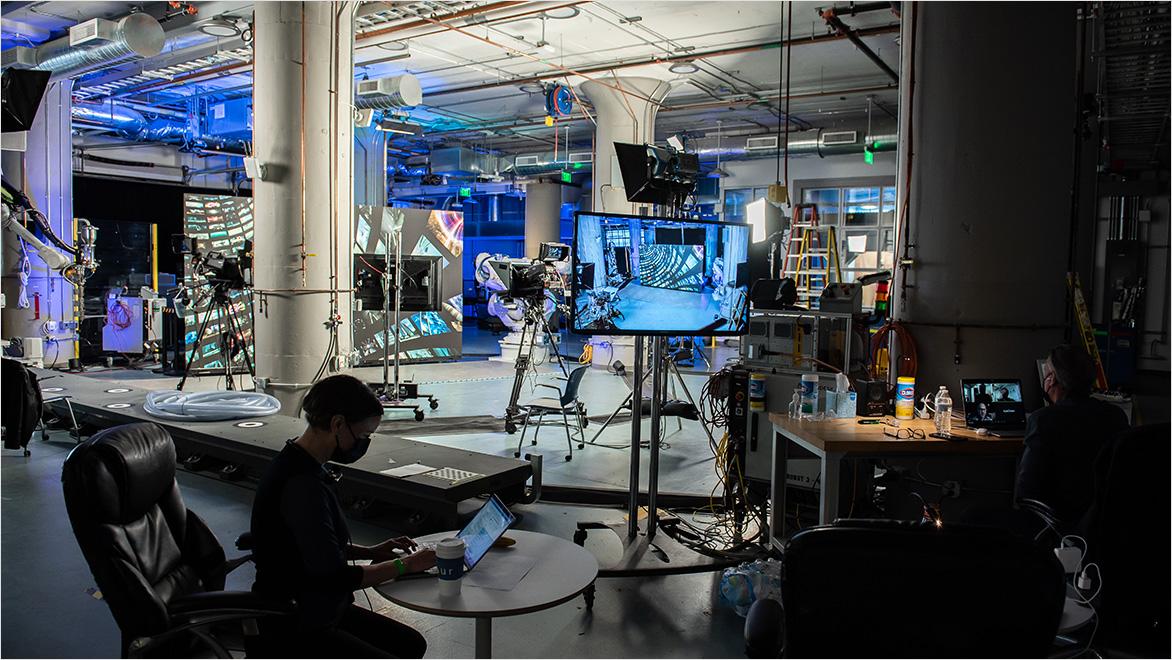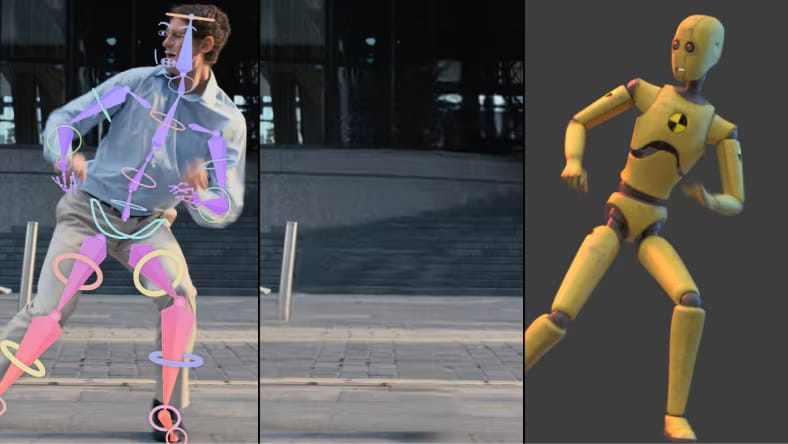& Construction

Integrated BIM tools, including Revit, AutoCAD, and Civil 3D
& Manufacturing

Professional CAD/CAM tools built on Inventor and AutoCAD
In filmmaking, story and setting are deeply intertwined. Imagine a movie set on a bustling Mumbai street—every frame should pull the audience into a carefully crafted world, adding to the plot and supporting the narrative.
For filmmakers and cinematographers, set design goes beyond simply creating a physical space. It builds an immersive world that supports the story and draws viewers in. Using cinematic architecture software, filmmakers can now push the boundaries of reality. From creating precise replicas of iconic structures to designing fantastical worlds that defy the laws of physics, these tools allow filmmakers to transform creative visions into visual realities.
Cinematic architecture is how buildings, landscapes, and environments contribute to a film’s visual storytelling. It is the deliberate use of architectural design to influence the mood, tone, and narrative of a film.
Set designers carefully plan spaces and ensure that every pillar, arch, and wall is useful to the plot, safe for the actors, and fits within the film’s style. Traditionally, creating elaborate sets would take months or even years. Today, thanks to software like Autodesk Revit, the process is faster and more efficient. Designers can sketch and blend real-world locations and virtual spaces with incredible detail, ensuring that every bit of the set supports the film’s mood and tone.
Virtual set design is the process of creating digital environments for film, TV, and other media productions. Instead of physically building a set, filmmakers use software to design and render scenes digitally. These virtual environments can be as realistic or fantastical as needed, giving filmmakers the flexibility to create settings that would be impossible or too costly to construct in real life. These virtual sets are often used in combination with green screens or LED walls, allowing actors to perform in front of digital backdrops that appear seamless in the final production.
Every successful film begins with an idea, but turning that idea into a tangible set involves a complex creative process. Autodesk’s tools, including Maya and 3ds Max, offer filmmakers powerful platforms to design, visualise, and collaborate, ensuring a smooth journey from concept to screen.
Maya and 3ds Max are ideal for crafting photorealistic 3D environments. Maya is particularly effective for building complex digital scenes, while 3ds Max offers advanced rendering capabilities that make virtual sets look as lifelike as the final movie.
Using Arnold, the built-in renderer, filmmakers can preview scenes with accurate lighting, materials, and camera setups. This allows directors, set designers, and producers to visualise the environment and secure early approvals before any physical set construction begins.
Image courtesy of Munden Fry Landscape Associates
Technical drawings and blueprints are often handled through AutoCAD or Revit. These software programs translate creative concepts into detailed construction plans, enabling production teams to follow building specifications with precision, ensuring the set design stays true to the creative vision.
For filmmakers integrating 3D-printed elements, Maya and 3ds Max allow digital models to be exported for fabrication. These models can be used to create smaller props or detailed set pieces, ensuring the final physical output aligns with the original design.
Collaboration is at the heart of filmmaking, and Autodesk’s tools facilitate real-time coordination across departments. Using Revit, teams can work on shared models simultaneously, ensuring that updates are instantly visible to everyone involved. Directors, cinematographers, and designers can access the same digital environment, making it easy to coordinate design changes.
For instance, if a director requests changes to a building layout to improve camera movement, the designer can adjust the Revit model instantly, ensuring everyone stays aligned. This seamless collaboration reduces communication delays and prevents costly changes during production.
Wonder Dynamics powerful AI-toolset Wonder Studio empowers creators and artists to focus more on the iterative and creative aspects of storytelling. You can turn your footage into live-action animated films, commercials, music videos, and more with AI-powered Wonder Studio.
Replace live actors with 3D characters and seamlessly capture facial, body, and hand movements with Wonder Studio's AI mocap technology. Get complete motion capture data for your project in USD or FBX formats, with advanced character bone retargeting and export-ready animations.
Gain ultimate flexibility for precise character placement and movement control with the Camera Track Tool. Match movements of a virtual camera to real-life scenes for realistic alignment and motion and detect the planes within your scene using Point Cloud.
Export selected project elements enabled during Render Setup. From Clean Plate, to Camera Track, and Alpha Masks, customize and download your desired outputs to see exactly what you need for the creative task at hand.
Plan, design, construct, and manage buildings with powerful tools for Building Information Modeling.
2D and 3D CAD tools, with enhanced insights, AI-automations, and collaboration features. Subscription includes AutoCAD on desktop, web, mobile, and seven specialized toolsets.
Set design is much more than arranging furniture or choosing paint colours. It's about crafting an environment that enhances a story. In Bollywood, where aesthetics often takes centre stage, set design is a key part of creating the emotional landscape of a movie.
The right set design helps viewers feel the emotions of the story—joy, sorrow, tension, and excitement. When done well, it immerses the audience in the film's universe, allowing them to forget the real world for a bit. Think about iconic Bollywood films like Dilwale Dulhania Le Jayenge or Kabhi Khushi Kabhie Gham. The sets in these movies are just as memorable as the characters.
Here’s how Autodesk software enhances cinematic architecture:
Maya allows filmmakers to create highly detailed and accurate environments. Imagine recreating a Mughal fort or a bustling Mumbai market with precision down to the texture of the walls and the lighting patterns throughout the day.
Sometimes, filmmakers need to build something that doesn’t exist in reality. With 3ds Max, these imaginative visions can be brought to life. There’s no limit to what you can create.
Physical set construction can be incredibly expensive and labour-intensive. With virtual sets, the costs are significantly reduced. Instead of spending time and money on constructing elaborate sets, filmmakers can use software to design these spaces and project them onto green screens or LED walls.
Fusion’s iterative design capabilities allow filmmakers to make changes to their sets quickly and efficiently. Whether it’s adjusting the colour scheme, changing the layout, or adding new elements to the design, filmmakers have the flexibility to experiment and refine their vision without the limitations of physical set builds.
As the Indian film industry moves towards more sustainable practices, virtual sets also provide an environmentally friendly alternative to traditional set construction. Digital environments require fewer physical resources and less waste, making them an eco-conscious option for filmmakers who are looking to reduce their carbon footprint.
Technology has always played a role in Bollywood’s evolution, from early hand-painted backdrops to today’s digitally created environments. Virtual set design is the next step in this progression.
One of the most exciting aspects of virtual set design is its potential to level the playing field. Smaller-budget films can now compete with larger productions by using virtual sets to create expansive, visually stunning environments without the need for expensive, elaborate physical builds.
In a country as vast and diverse as India, this democratisation of technology could lead to even more innovation in the filmmaking process, as smaller studios have access to the same high-end tools.
Call 000-800-040-2543 (9:30 AM to 5:30 PM India local time) if you need our assistance.
Experience 3D modelling, simulation, and collaboration tools with the Autodesk Fusion free trial. Get started with powerful features that bring your cinematic designs to life.
Discover how Autodesk tools enable the creation of engaging virtual sets and immersive environments for filmmakers. Learn new techniques to enhance storytelling.
Use Autodesk 3ds Max to create stunning visuals and animations for your film projects. Explore powerful set and character modelling features.
Cinematic architecture refers to the design and use of buildings, landscapes, and environments that help tell a story in a film. These structures often serve as more than just backgrounds; they set the mood, define the tone, and sometimes even act as characters in the film.
Traditional set design involves physically building sets on location or in a studio. Virtual set design creates digital environments using software like Autodesk Maya or Fusion, which can be combined with live-action footage, reducing the need for costly physical sets.
Virtual set design is becoming popular because it saves time, reduces production costs, and provides filmmakers with greater creative freedom. Bollywood’s push toward larger-than-life, fantasy, and sci-fi genres makes digital sets a practical solution for creating the impossible.
AR helps filmmakers visualise virtual sets in real-world environments before shooting. This can assist directors and set designers in making adjustments early on, ensuring a perfect fit between physical and digital elements during production.
3D models allow filmmakers to see detailed previews of their sets before production starts. They can experiment with lighting, camera angles, and even actor placement, ensuring everything fits together well, saving both time and effort during shooting.
Yes, filmmakers can use virtual set design to recreate real-world locations digitally. This is useful for scenes that are difficult or expensive to shoot on location, such as busy streets, historical sites, or restricted areas.









